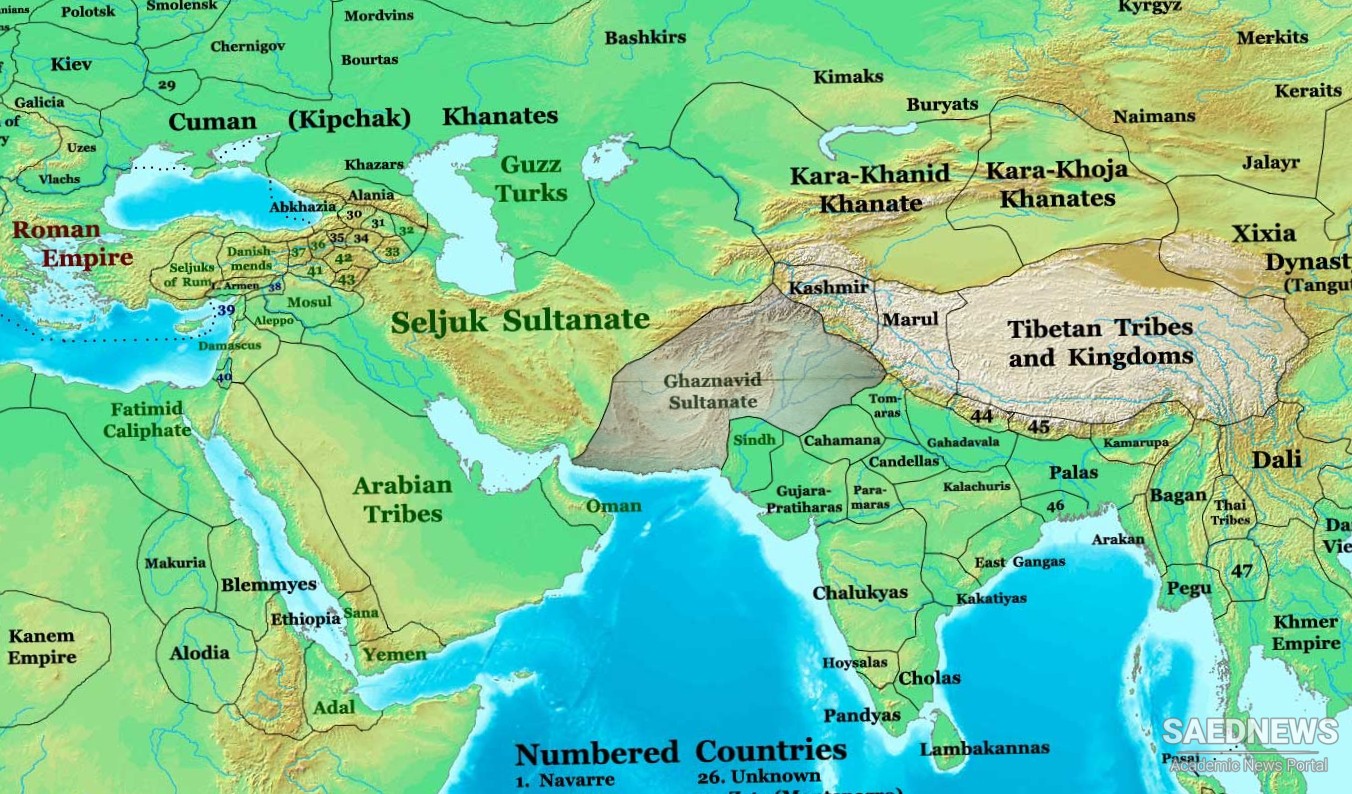He now decided on a final effort to engage the Saljuqs in the steppes around Marv, and took with him a large army, including a force of elephants. But they found food and water virtually non-existent in the steppes, to such a point that the Ghaznavid cavalrymen were reduced to fighting on camels instead of horses. When Mas'ud's army engaged some 16,000 Turkmens at the ribat of Dandanqan on the road from Sarakhs to Marv, they were in a dispirited and internally divided condition, so that when the Saljuqs attacked, their "sword-blade fell only on cuirasses already cracked, and on helmets already split". In this crucial battle, the sultan's troops were routed, and a sauve-qui-peut back to Afghanistan and Ghazna followed. Khurasan had to be abandoned to the Saljuqs, and on the battlefield, Toghril was proclaimed amir of Khurasan.
The towns of Khurasan all capitulated to Toghril and Chaghri. Mas'ud tried fruitlessly to get help from the Qarakhanid Sulaiman Arslan Khan of Kashghar. He became plunged in melancholy; conducted a purge of those of his subordinates whom he considered had failed him; he even considered ceding northern Afghanistan to Bori Tegin, in the hope that the latter would become embroiled with the Saljuqs. Finally, he decided to give up the struggle and abandon Ghazna for India, even though his advisers assured him - truly, as events showed - that eastern Afghanistan was perfectly defensible against the Saljuqs. He gathered together all his treasure and set off for India, but when his column reached the ribat of Marikala near Taxila in the Punjab, the army mutinied and plundered his treasury and baggage. The rebels raised to the throne once more Muhammad b. Mahmud, just released from imprisonment, and Mas'ud himself was killed (432/1041), giving him in the eyes of future generations the designation of amir-ishahid " the Martyr-King". Mas'ud's son Maudud came from Balkh, setting himself up as his father's avenger, and a few months later, according to some authorities, he overthrew and killed Muhammad in a battle at Nangrahar in the Kabul River valley.
One may consider the early Ghaznavid period as ending at this point. The empire survived with reduced territories, essentially those of eastern Afghanistan, Baluchistan and the Punjab, for another 130 years. In the middle decades of the 5th century, peace was made with the Saljuqs, and the frontier between the two empires stabilized; Sultan Ibrahim b. Mas'ud restored some of the glory of his father's and grandfather's age and treated with the Saljuq sultans on equal terms. If we are to evaluate the historical significance of the early Ghaznavid empire, we may note the following points.
First, the Ghaznavids exemplify the phenomenon of barbarians coming into the higher civilization of the Islamic world and being absorbed by it. The court culture under Mahmud and Mas'ud, with its fine flowering of Persian poetry and the commanding figure of the polymath Birunl, shows how far this process went, as does the moulding of the administration of the empire within the Perso-Islamic tradition. The sultans also took over one of the historic tasks of the Iranian rulers of the east, the maintenance of a bastion there against further invaders from the steppes. Secondly, the Ghaznavid empire had an essentially military bias.
It was built around a highly professional, multi-national army, with a nucleus of slave guards personally attached to the sultan; and because of the connection with India, the sultans were able to keep this standing army generally occupied in the exploitation of the riches of the subcontinent. The constituting of the Ghaznavid army, a fighting instrument so much admired by later political theorists like Nizam al-Mulk, thus marks the culmination of the general infiltration of the eastern Islamic world by Turkish mercenaries. On these fringes, the Turks managed to overthrow the indigenous Iranian powers and build up a mighty empire of their own, setting the pattern for Turkish political domination over much of the Islamic world for centuries to come.
Thirdly, the Ghaznavids have a place in history as the introducers on a large scale of Muslim rule into northern India, and the establishers, through the intermediacy of such scholars as Biruni, of the first direct connection with the culture of the Indian world. In terms of permanent settlement and conversions to Islam, the Ghaznavid period in India was not as important as succeeding ages, but the sultans did by their raids accustom the Turkish and Afghan peoples of Inner Asia to utilize the plains of India as an outlet for barbarian energies; and in the course of these incursions, Islam was made one of the major faiths of the subcontinent.
Fourthly, the personalities of Mahmud and Mas'ud were built up in popular minds into great Muslim heroes, and almost into folk-heroes. Mahmud is prominent in later literature, in both the adab collections of anecdotes and in the poetic romances, in various guises: as the great despot, as the lover of his favourite Ayaz, and above all, as the scourge of the infidels in India. Mas'ud also, has to a lesser extent a place in the popular mind as a warrior in India and as the "Martyr-Sultan".


 Ghaznavids vs. Turkmens
Ghaznavids vs. Turkmens














































